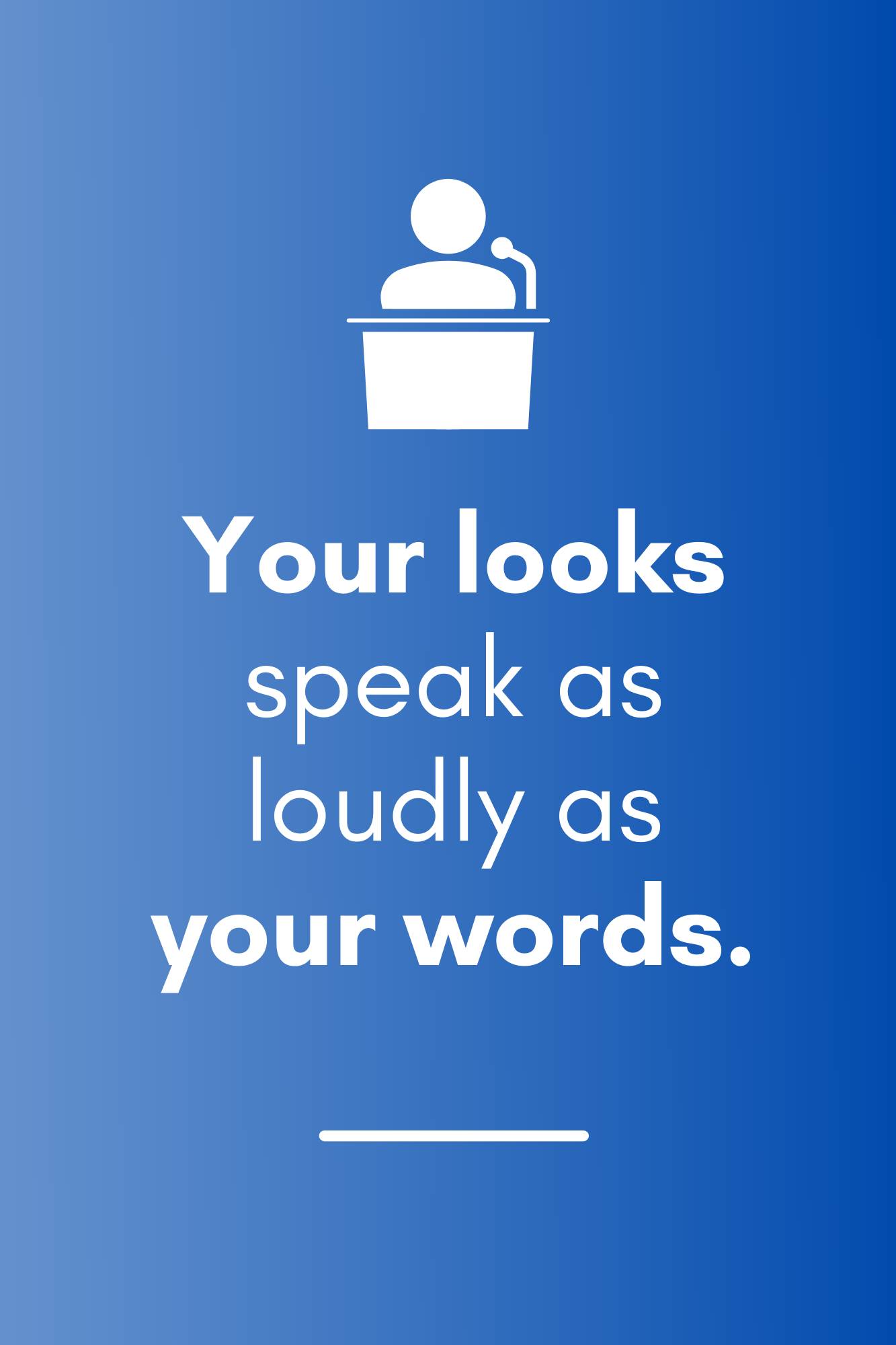Delivery
Delivery is the way in which we present our speech. It is generally divided into two categories, verbal and nonverbal delivery, and includes everything from the way we say the words to our hand and body movements. Good delivery does not make up for poor content, though good delivery is essential to a good speech. Remember, delivery is an area that improves exponentially with practice! Here are some common tips skilled speakers use to get their message across clearly and persuasively.
Think Conversational Quality
This phrase captures many different aspects of good delivery, but what does it mean? Think of a time you have had a meaningful conversation with someone you respect and are comfortable being around. How fast do you speak? How do you pronounce words? Do you talk with your hands? Typically, this is the style you should use for public speaking. Next, let's break down some specific aspects of delivery.
Verbal Delivery
Rate - Research shows that audiences favor quicker speakers over slower speakers. Speaking very slowly could give the impression that you are not practiced or do not know the material. Keep your speaking pace up, but do not speak so fast that the audience might miss something important. Think about conversational quality. How fast would you speak in that scenario? Use that as a baseline for your speaking rate.
Inflection - Inflection refers to the changes in pitch or tone of a speaker. We use inflection as a crucial part of daily speech, though it is easy to forget once in front of a crowd; it is easy to stay the same pitch and simply read what is written. Avoid this monotone delivery style. Inflection gives our words life and adds emotion to our expressions.
Pauses - We use pauses for different reasons: to signal the end of a thought, give an idea time to sink in, and lend dramatic impact to a statement. While practicing your speech, look for moments where you could pause to let the audience sit with something you've just said - especially if it is the main point or something vital to your message.

Nonverbal Delivery
The voice is usually the first thing that comes in speech presentations, but we also communicate with our bodies. The nonverbal elements of delivery discussed below can help us appear confident and competent at the podium.
Personal Appearance - How we look matters, both to ourselves and to our audience. Dressing so that you feel presentable and professional will help you give a better speech and reduce your anxiety about being judged. Your audience will appreciate you putting your best foot forward as well. Looking nice is a sign that you care about what you are going to say.
Movement - It is good to practice to see how speech anxiety influences your movement. Many develop nervous habits such as shifting their weight from one foot to the other, using uncontrollable hand motions, or pacing back and forth. The distracting movement will disappear as you become more comfortable and practiced.
Gestures - Motioning with your hands can help emphasize your message, but it can also become a distraction. There is no perfect amount of gestures, they should just be natural and not so excessive that they take focus away from your message. Remember to think about how you would gesture during a natural conversation.
Eye Contact - Considered the base level of communication, eye contact is the best way to establish a relationship with your audience. An absence of eye contact can quickly mean an absence of the audience's attention. Eye contact also aids in making you seem honest and credible, while failure to do so can sometimes come across as dishonest or insincere.
Prepared by GVSU Speech Lab Consultants & Carl J. Brown
Some information adapted from Stephen Lucas' The Art of Public Speaking, Tenth Edition.

